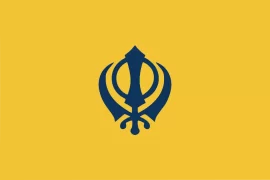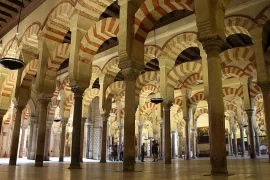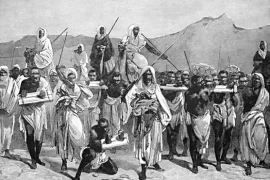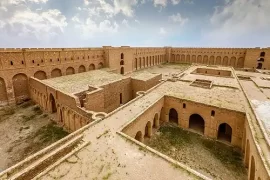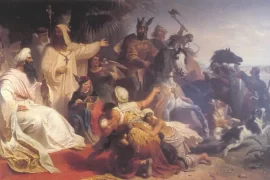The Holy Roman Empire was a vast and complex entity that existed for over a thousand years, spanning from the Early Middle Ages to the early 19th century. At its height, it encompassed diverse territories across Central Europe, leaving a profound impact on the political, religious, and cultural landscape of the continent. In this article, we will explore the Holy Roman Empire through the lens of its map, tracing its boundaries and shedding light on the dynamic nature of this intriguing historical entity.
The Formation of the Holy Roman Empire
The roots of the Holy Roman Empire can be traced back to the coronation of Charlemagne as the Emperor of the Carolingian Empire in 800 CE. This marked the revival of the idea of a unified Western Roman Empire. However, it was not until the reign of Otto I in 962 CE that the term “Holy Roman Empire” came into official use. Otto I sought to establish a Christian empire that encompassed both spiritual and secular power, forging a unique relationship between the papacy and the emperor.
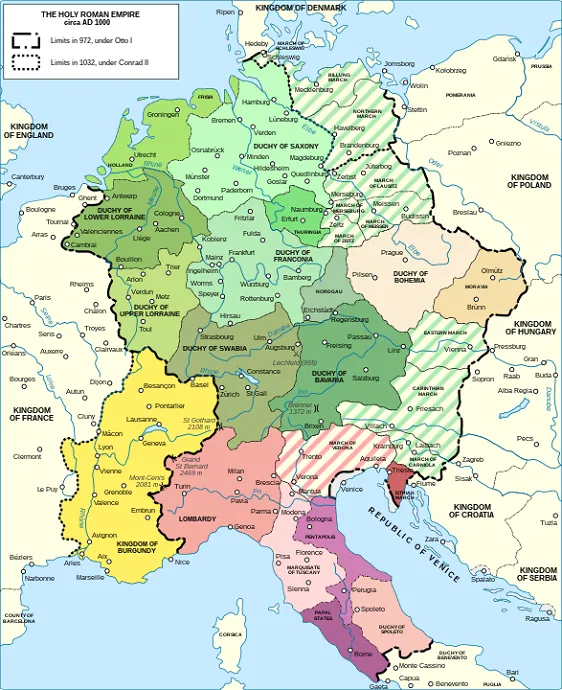
The Shifting Borders
The Holy Roman Empire was characterized by a fluid and ever-changing map. Its borders expanded and contracted over time due to a variety of factors, including wars, diplomatic negotiations, and the ambitions of both emperors and local rulers. The empire encompassed territories that are now part of modern-day Germany, Austria, Switzerland, the Czech Republic, the Netherlands, Belgium, Luxembourg, and parts of Italy, France, and Poland. The exact borders of the empire were influenced by political, cultural, and religious dynamics, resulting in a mosaic of regions with varying degrees of autonomy and allegiance to the emperor.
Prince-electors and Imperial Circles
Within the Holy Roman Empire, power was decentralized and shared among a complex web of territories and states. The prince-electors, a group of influential nobles, played a pivotal role in electing the emperor. They were responsible for selecting the individual who would hold the imperial title, further illustrating the intricate political landscape of the empire. Additionally, the empire was divided into Imperial Circles, which were administrative divisions designed to facilitate governance and defense. The circles helped to organize the territories, establish alliances, and maintain order within the empire.
Challenges and Conflicts
The Holy Roman Empire faced numerous challenges throughout its existence. Internal conflicts, such as the Investiture Controversy between emperors and popes, strained the relationship between secular and religious authorities. External threats from invasions by Mongols, Ottoman Turks, and other neighboring powers added further complexities to the empire’s stability. The empire also experienced religious divisions during the Protestant Reformation, leading to the formation of Protestant territories that challenged the authority of the emperor and the Catholic Church.
The Dissolution of the Holy Roman Empire
The Napoleonic era proved to be a turning point for the Holy Roman Empire. With Napoleon Bonaparte’s conquests and the establishment of the Confederation of the Rhine, the empire was dissolved in 1806. The final remnants of the empire gave way to the formation of new states, marking the end of an era that had profoundly shaped European history.
Legacy and Historical Significance
Although the Holy Roman Empire dissolved, its impact on European history cannot be underestimated. It laid the foundation for the development of modern-day Germany and played a crucial role in shaping the political and cultural landscape of Central Europe. The empire’s complex map and intricate political structure offer insights into the challenges and complexities of governance during medieval and early modern times.
Summary of ‘Holy Roman Empire Map’
The Holy Roman Empire, with its dynamic and ever-changing map, was a multifaceted entity that shaped European history for over a millennium. From its diverse territories to its intricate political structure, the empire serves as a testament to the complexities of medieval and early modern Europe. The Holy Roman Empire map reveals the ebb and flow of power, the interplay of regional dynamics, and the challenges of maintaining a unified entity in a diverse and ever-shifting landscape.
Tracing the boundaries of the Holy Roman Empire on a map allows us to appreciate the vastness and diversity of the territories it encompassed. It highlights the intricate relationships between the emperor, the prince-electors, and the various states within the empire. It also emphasizes the challenges faced by the empire, from internal conflicts to external threats, which ultimately contributed to its dissolution.

